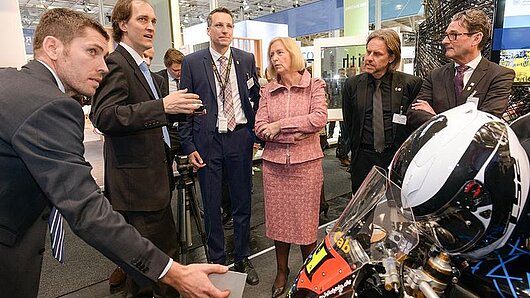High-Performance Computing Center Stuttgart

Very concentrated, she followed the explanations by Dr. Uwe Wössner about the visualization of the airflow around a motorcycle using Augmented Reality (AR). To demonstrate to Minister Wanka the interactive nature of the presentation, a virtual smoke wand was moved around the motorcycle to illustrate how the air flow behaves in different locations around the bike and its driver. Only by using high performance computing (HPC) systems, simulations can be carried out quick and accurate enough in order to optimize products such as the wind shield in this example. Minister Wanka was greatly impressed with the presentation and showed her satisfaction about the fruitful investments by the federal government in HPC and especially the HLRS.
A second application which was presented by HLRS on the CeBIT show floor was the digitalization of accident documentation and reconstruction. 3D Laser scanners are used to scan traffic accidents. The scanned point clouds are converted to standard data formats describing the road surfaces, traffic signs, lights and other road side objects. Based on the scanned geometry, crash simulations can be carried out in order to better estimate the plastic deformations and thus increase the accuracy of the overall accident reconstruction. To illustrate this, a collision of a car with the motorcycle was also presented in Augmented Reality—a presentation which also caused lots of attention by the CeBIT visitors paying a call to HLRS at the show booth.